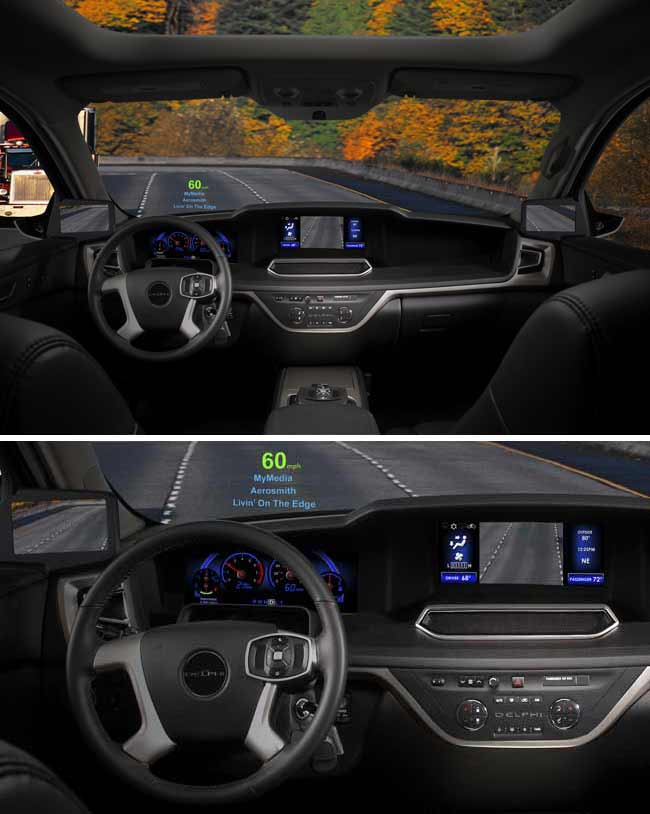Inside the Cockpit of Tomorrow's Car

Even if you're driving to the poor house with what little gasoline you can afford, Detroit intends to turn that into a high-tech experience. Auto-makers are cooking up technology that will eventually assist the driver's every decision.
Systems are on the books that will warn the driver of what's happening around the car — even a quarter mile down the road and around the corner.
And you may never have to look at the dashboard again.
HUD over hood
Probably the most significant announcement, since it sells its systems to multiple car makers, is the concept car that has been shown by Delphi Corp. of Troy, Mich. Not only are some of the car's display instruments entirely digital, but the output can be rendered as large glowing numbers that appear to float in the air in front of the windshield.
Hallucinogenics are not involved, as the illusion is based on head-up display (HUD) technology long used in fighter jets, with the output projected against an otherwise transparent reflector inside the windshield/cockpit canopy. By default, the Delphi system displays the speedometer reading, as well as the setting of the entertainment system, so you can dial it without looking away from the road.
The dashboard is a large flat-panel monitor, which mimics standard instrument displays. All three rearview mirrors are replaced by monitors connected to backward-pointing cameras. The middle screen can also be used for the navigation system and might be used to display informational videos, such as how to change the tire.
Sign up for the Live Science daily newsletter now
Get the world’s most fascinating discoveries delivered straight to your inbox.
Car-to-car
General Motors has announced it is developing an elaborate system that will warn drivers about what other cars are doing around them. This vehicle-to-vehicle (V2V) system will be based on radio transponders and GPS receivers in cars which will interact with V2V systems in other cars up to a quarter mile away.
If a car spots an upcoming problem, the driver can be warned in several ways, including by blinking icons on a small display screen atop the central dashboard, or within the rearview mirror. Or, the car can shake the driver's seat, sound chimes, or play recorded warning messages. It can even stomp the brakes.
For instance, if it detects an imminent collision with a car ahead in the same lane, it can vibrate the seat, shout "Caution!" and apply the brakes. If it detects a car in the driver's blind spot, it will display a yellow icon in the rear view mirror. It will then flash the icon and shake the driver's seat if the turn signal is activated. It can detect cars approaching intersections around a corner and issue a warning if a collision seems imminent.
Blind spots
Ford has announced that it is working on collision warnings, lane departure detection, and blind spot warning systems.
Chrysler has brought out a blind-spot monitoring system for certain models, and a system that monitors the area behind the car when the car is in reverse. Other vehicles, including the Cooper Mini, already have a system that beeps to warn of objects behind you.
When these technologies and similar technologies doubtless being hatched by other carmakers come into play, driving may become akin to playing astro-pilot. But how soon that will be, no one in Detroit is able to willing to say — yet.









